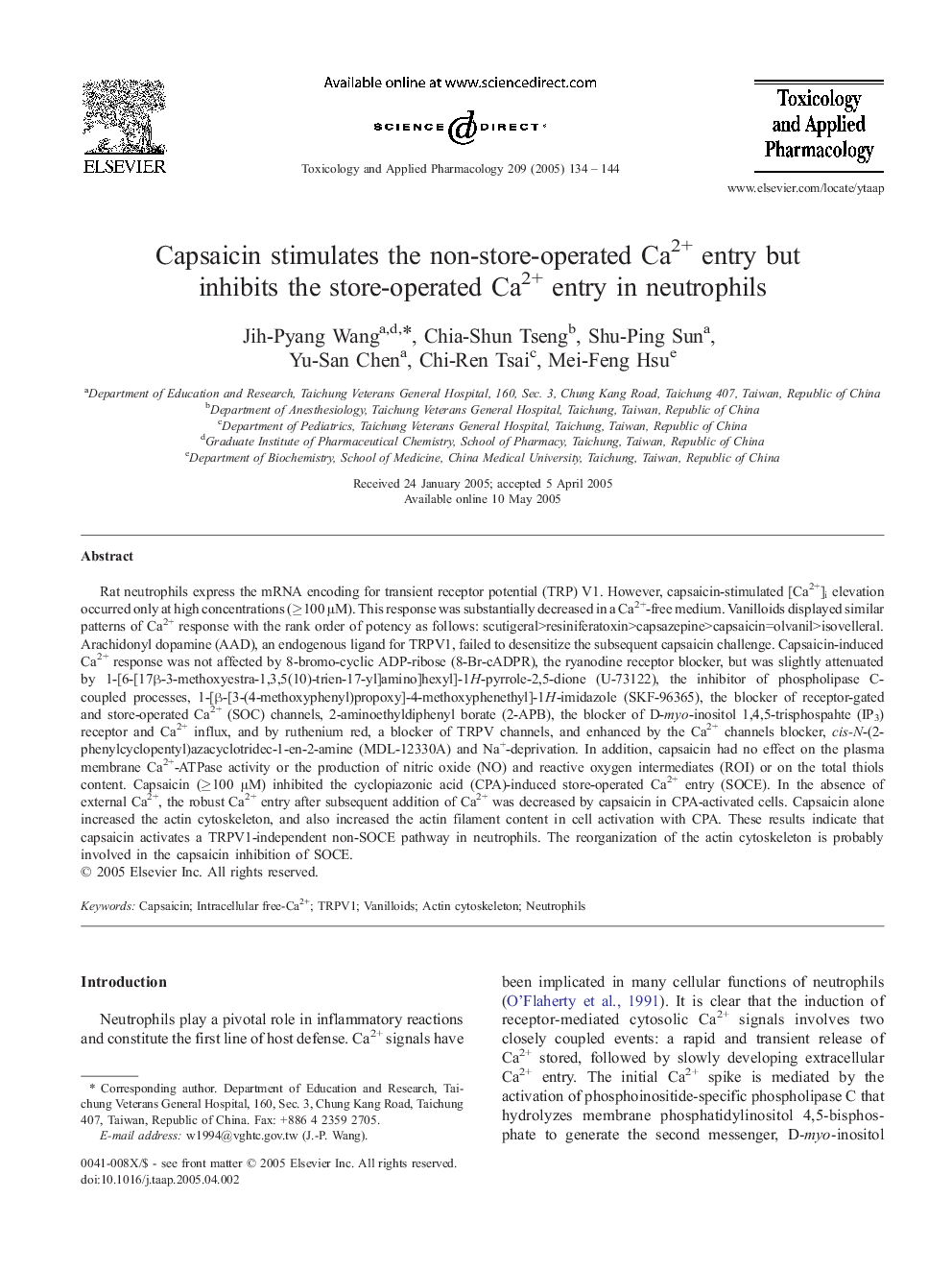| Article ID | Journal | Published Year | Pages | File Type |
|---|---|---|---|---|
| 9017917 | Toxicology and Applied Pharmacology | 2005 | 11 Pages |
Abstract
Rat neutrophils express the mRNA encoding for transient receptor potential (TRP) V1. However, capsaicin-stimulated [Ca2+]i elevation occurred only at high concentrations (â¥100 μM). This response was substantially decreased in a Ca2+-free medium. Vanilloids displayed similar patterns of Ca2+ response with the rank order of potency as follows: scutigeral>resiniferatoxin>capsazepine>capsaicin=olvanil>isovelleral. Arachidonyl dopamine (AAD), an endogenous ligand for TRPV1, failed to desensitize the subsequent capsaicin challenge. Capsaicin-induced Ca2+ response was not affected by 8-bromo-cyclic ADP-ribose (8-Br-cADPR), the ryanodine receptor blocker, but was slightly attenuated by 1-[6-[17β-3-methoxyestra-1,3,5(10)-trien-17-yl]amino]hexyl]-1H-pyrrole-2,5-dione (U-73122), the inhibitor of phospholipase C-coupled processes, 1-[β-[3-(4-methoxyphenyl)propoxy]-4-methoxyphenethyl]-1H-imidazole (SKF-96365), the blocker of receptor-gated and store-operated Ca2+ (SOC) channels, 2-aminoethyldiphenyl borate (2-APB), the blocker of D-myo-inositol 1,4,5-trisphospahte (IP3) receptor and Ca2+ influx, and by ruthenium red, a blocker of TRPV channels, and enhanced by the Ca2+ channels blocker, cis-N-(2-phenylcyclopentyl)azacyclotridec-1-en-2-amine (MDL-12330A) and Na+-deprivation. In addition, capsaicin had no effect on the plasma membrane Ca2+-ATPase activity or the production of nitric oxide (NO) and reactive oxygen intermediates (ROI) or on the total thiols content. Capsaicin (â¥100 μM) inhibited the cyclopiazonic acid (CPA)-induced store-operated Ca2+ entry (SOCE). In the absence of external Ca2+, the robust Ca2+ entry after subsequent addition of Ca2+ was decreased by capsaicin in CPA-activated cells. Capsaicin alone increased the actin cytoskeleton, and also increased the actin filament content in cell activation with CPA. These results indicate that capsaicin activates a TRPV1-independent non-SOCE pathway in neutrophils. The reorganization of the actin cytoskeleton is probably involved in the capsaicin inhibition of SOCE.
Related Topics
Life Sciences
Environmental Science
Health, Toxicology and Mutagenesis
Authors
Jih-Pyang Wang, Chia-Shun Tseng, Shu-Ping Sun, Yu-San Chen, Chi-Ren Tsai, Mei-Feng Hsu,
